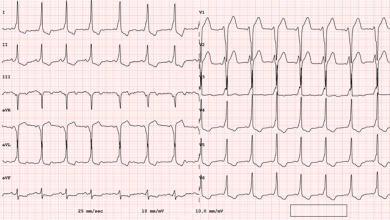Search results
Author(s):
Andreas Metzner
,
Erik Wissner
,
Tina Lin
,
et al
Added:
3 years ago
Atrial fibrillation (AF) is the most common cardiac arrhythmia affecting 1.5–2 % of the general population.1 In the current clinical guidelines, catheter ablation is recommended in addition to drug-based antiarrhythmic therapy for patients suffering from symptomatic, drugrefractory AF. However, catheter ablation, if performed at an experienced centre, may also serve as first-line therapy in…
View more
Author(s):
Simon Ermakov
,
Melvin Scheinman
Added:
3 years ago
Arrhythmogenic right ventricular cardiomyopathy (ARVC) is an inherited cardiomyopathy characterised by progressive replacement of the ventricular myocardium by fibrofatty tissue.1 Patients with the disease are predisposed to ventricular arrhythmias, heart failure and sudden cardiac death.
Pathophysiology
ARVC has a strong genetic basis with most disease variants displaying an autosomal dominant…
View more
Author(s):
Klaus-Jürgen Gutleben
,
Henrik Fox
,
Thomas Bitter
,
et al
Added:
3 years ago
Implantable cardiac devices, such as pacemakers, are used to treat a number of heart conditions, especially those related to the electrical conduction system. Cardiac pacemakers are a well-established and effective therapy, and have been in use for more than 50 years.
The first pacemaker was implanted in a patient in October 1958 by Åke Senning in Stockholm, in cooperation with engineer Rune…
View more
Author(s):
Jens Kienemund
,
Karl-Heinz Kuck
,
Christian Frerker
Added:
3 years ago
Prevalence of Functional Mitral Regurgitation in Patients with Chronic Heart Failure
Secondary or functional mitral regurgitation (FMR) is a common problem in patients with chronic heart failure (HF) due to dilated cardiomyopathy, regardless of aetiology.1 FMR results from an imbalance between the closing and the tethering forces that act on the mitral valve leaflets.2,3
A chart review of…
View more
A Critical Reappraisal of the Current Clinical Indications to Cardiac Resynchronisation Therapy
Author(s):
Antonio Sorgente
,
Riccardo Cappato
Added:
3 years ago
Article
Author(s):
Akriti Naraen
,
Dileep Duvva
,
Archana Rao
Added:
9 months ago
Author(s):
Amir A Schricker
,
Junaid Zaman
,
Sanjiv M Narayan
Added:
3 years ago
Catheter ablation is more effective than pharmacological therapy for the secondary prevention of patients with paroxysmal1,2 and persistent3,4 atrial fibrillation (AF) and has an emerging role in the primary prevention of paroxysmal AF.5,6 Nevertheless, in randomised clinical trials (RCTs) its success in treating patients with paroxysmal AF is 40–60% for a single procedure and 70% for multiple…
View more
Author(s):
Ahran D Arnold
,
Nadine Ali
,
Daniel Keene
,
et al
Added:
3 years ago
Dear Sir,
We read Dr Zografos’ response to our article1 with interest. He agrees with the findings of our review but highlights two important issues for further discussion, which we address below.
Right ventricular lead position
Dr Zografos points out that randomised comparisons of different right ventricular lead positions have not shown superiority of septal pacing over apical pacing.2 This…
View more
Author(s):
Marco Alings
Added:
3 years ago
Atrial Fibrillation(AF) is the most common cardiac arrhythmia, with the highest prevalence in elderly patients, and is characterised by an irregular heart rhythm that may result in clots in the heart that can spread throughout the circulatory system. It is seen in approximately 2 % of the European adult population and is a significant cause of increasing healthcare costs in developed countries.1…
View more
Author(s):
Rahul K Mukherjee
,
Manav Sohal
,
Nesan Shanmugam
,
et al
Added:
2 years ago












 « First
« First